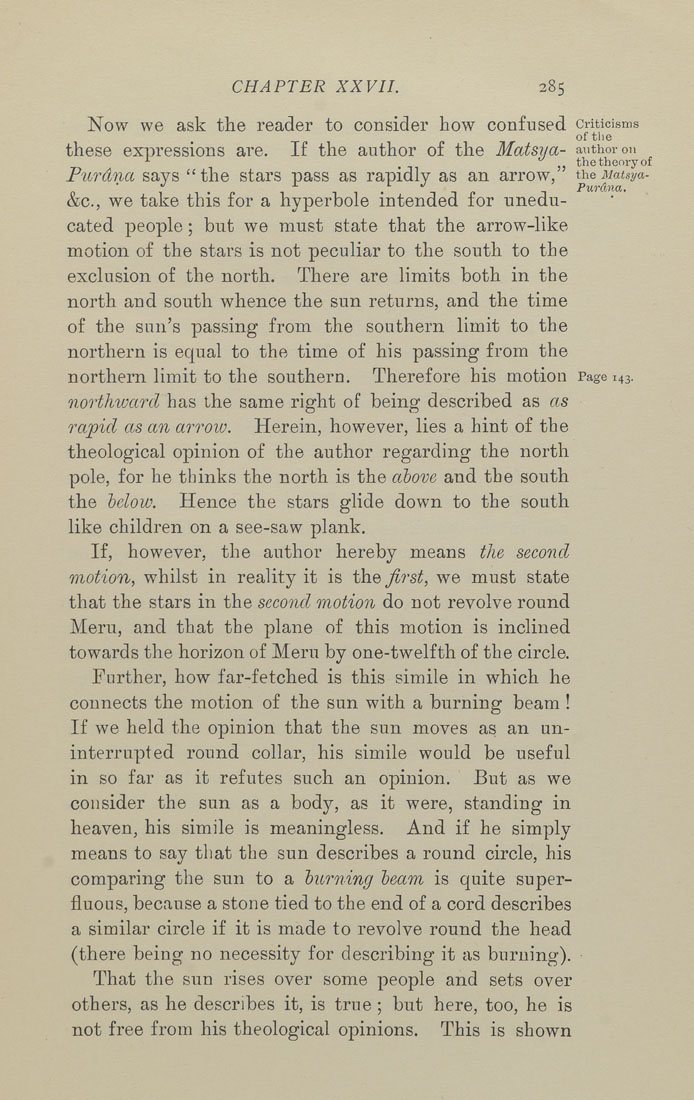Bīrūnī, Muḥammad ibn Aḥmad, Alberuni's India (v. 1)
(London : Kegan Paul, Trench, Trübner & Co., 1910.)
|
||
|
|
|
|
| Page 285 |

CHAPTER XXVII. 285 Now we ask the reader to consider how confused criticisms T p r of the these expressions are. If the author of the Matsya- author on ^ "^ the theory of Purdna says " the stars pass as rapidly as an arrow, the Matsya- 1 • p 1 ^ ^ ' -I -t 0 -[ Purdna. &c., we take this for a hyperbole intended for unedu¬ cated people; but we must state that the arrow-like motion of the stars is not peculiar to the south to the exclusion of the north. There are limits both in the north and south whence the sun returns, and the time of the sun's passing from the southern limit to the northern is equal to the time of his passing from the northern limit to the southern. Therefore his motion Page 143. northiuard has the same right of being described as as rapid as an arroiv. Herein, however, lies a hint of the theological opinion of the author regarding the north pole, for he thinks the north is the above and the south the below. Hence the stars glide down to the south like children on a see-saw plank. If, however, the author hereby means the second motion, whilst in reality it is the first, we must state that the stars in the second motion do not revolve round Meru, and that the plane of this motion is inclined towards the horizon of Meru by one-twelfth of the circle. Further, how far-fetched is this simile in which he connects the motion of the sun with a burning beam ! If we held the opinion that the sun moves as an un¬ interrupted round collar, his simile would be useful in so far as it refutes such an opinion. But as we consider the sun as a body, as it were, standing in heaven, his simile is meaningless. And if he simply means to say that the sun describes a round circle, his comparing the sun to a burning beam is quite super¬ fluous, because a stone tied to the end of a cord describes a similar circle if it is made to revolve round the head (there being no necessity for describing it as burning). That the sun rises over some people and sets over others, as he describes it, is true ; but here, too, he is not free from his theological opinions. This is shown |
| Page 285 |







